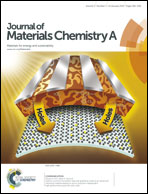Recent developments in first-principles force fields for molecules in nanoporous materials†
Abstract
There is a great need to identify high-performance nanoporous materials for gas storage, separation and catalysis to solve a wide range of industrially relevant challenges. Molecular simulations have become an important complement to experiments in the screening and selection of suitable porous materials. Successful implementation of molecular simulations requires accurate force fields (FFs) to describe the interactions of guest molecules with porous frameworks. However, developing accurate and transferable FFs for porous materials can be extremely challenging. While generic FFs and experimentally-derived FFs work well for many simple systems, they often fail to describe interactions in more complex porous materials. Since first-principles quantum mechanical (QM) approaches are capable of accurately predicting intermolecular interactions, deriving FFs from QM data without experimental input is a promising solution. In this paper, we review recent developments in deriving first-principles FFs for molecules in a variety of nanoporous materials. We summarize and classify the methodologies used in these studies, and discuss the factors that are responsible for the accuracy and reliability of FFs. Finally, we conclude the review with a discussion of current challenges and future directions for this rapidly growing field.


 Please wait while we load your content...
Please wait while we load your content...